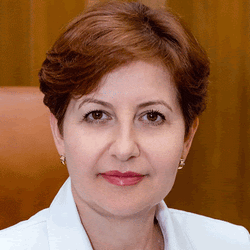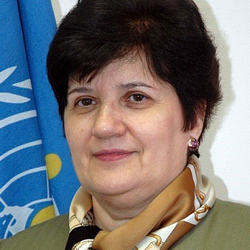WHO: focusing only on coronavirus can lead to a tuberculosis epidemic this year
Russia and the world are facing an increase in the number of deaths from this “social disease” from 1,5 to almost 2 million people by the end of 2020
Due to the blind fixation of countries, society and healthcare systems on fighting only coronavirus, the world can expect an explosive increase in the number of tuberculosis cases already this year, WHO experts and Russian doctors warn. The epidemic in this case will lead to an increase in the number of deaths from tuberculosis from 1,5 to 1,9 million people — for comparison, less than 1 million people died from COVID-19 worldwide so far. The explosive increase in deaths threatens to recall the Russian disaster of the 1990s, according to doctors, when the collapse of the USSR hit the system of prevention and treatment of tuberculosis, which is considered to be a social disease closely linked to poverty and job loss. At the same time, the quarantine has already halted professional examinations and necessary diagnostics — a number of regions of Russia has not been able to organise treatment at home, dealing only with coronavirus.
Statistics on tuberculosis are scarier than on coronavirus
Doctors and experts have expressed concern about a possible increase in the number of cases and deaths from tuberculosis — because of the fixation of healthcare systems, countries and populations only on the fight against coronavirus. This threatens a new epidemic, they warned.
Tuberculosis remains the number one killer in the world, said Irina Vasilyeva, chief extraordinary tuberculosis specialist at the ministry of healthcare of Russia: it kills up to 1,5 million people in the world every year — despite that 10 million people get sick with it.
For comparison, to date, almost 30 million people on Earth have been ill with COVID-19 — and 934,500 people died from it. Currently, a third of the world's population is infected with tuberculosis, Vasilyeva added, while experts note that “infected does not mean sick”.
Russian 1990s may repeat, when the collapse of the USSR led to an epidemic
The problem with a possible outbreak of tuberculosis epidemic concerns the whole world, but especially the states with a high number of cases and deaths from this disease, and this list, alas, still includes Russia. What's more dangerous, the increased incidence of tuberculosis, until the mid 20th century considered to be incurable, is influenced by socio-economic factors — poverty, job loss, and this, as you know, in many cases, led quarantine and lockdown.
Experts reminded that the USSR successfully fought against tuberculosis, a good system of its prevention and treatment was built. However, the “social catastrophe” after the collapse of the Soviet Union, already in the 1990s, caused a real epidemic of tuberculosis: the number of cases and deaths in this decade tripled. It took 10 years to stabilise the situation.
Even today, despite the general trend to reduce the number of cases and mortality rate, taking into account programmes of the government of the Russian Federation and ministry of healthcare of Russia (in 6 years, they reduced the incidence by 35%, mortality — by 53%), Russia continues to be in the list of high-risk countries.
The collapse of the Soviet Union and the resulting epidemic led to the emergence of drug-resistant tuberculosis — it appeared just in the 1990s in several parts of the world at once (and for approximately the same reasons): “drug-resistant tuberculosis developed exactly where the disease was initially fought, but then control was lost — resistance was formed”. Russia, India and China account for half of the cases of such tuberculosis. At the same time, there is an increase in the proportion of cases among people with reduced immunity, in particular those infected with HIV.
Quarantine halted professional examinations, diagnosis and treatment of tuberculosis

First of all, children may find themselves in a risky situation, says Valentina Aksenova, extraordinary children's specialist-phthisiologist of the ministry of healthcare of Russia, so you can not refuse to vaccinate newborns. You can't cancel it in the next 10 years. And although, the expert agrees, children do suffer less from Covid-19, in their case, the problem caused by coronavirus is different:

“If you stop vaccination — there will be a difficult situation”
Melita Vujnovic, WHO Representative to the Russian Federation, noted that most countries in the world, and especially in Europe, have found themselves in a similar situation. Difficulties arise from the fact that, as in the case of Covid-19, many people with tuberculosis are “asymptomatic” (people do not feel that they are ill), this infection is almost “latent”, hidden. WHO is also afraid of a new epidemic and an explosive increase in cases of tuberculosis, mostly drug-resistant.

“Aid has been interrupted, in some countries by 25%, somewhere by 90%. Treatment has largely been discontinued”
Tereza Kasaeva, the director of Director of the Global Tuberculosis at WHO, said that because of the coronavirus (and the public's focus only on it) the World Health Organization predicts an increase in mortality in 2020 alone to 1,9 million deaths — “this is a huge figure” (an increase of 26%). The problem, she agreed, is that the growth of tuberculosis is directly dependent on socio-economic shocks.

The similarity of symptoms of COVID-19 and tuberculosis makes it difficult to solve the problem
The planned examination of children for tuberculosis, Russian doctors note, is scheduled for this autumn — now everything depends on the regions. Experts also called for more skepticism, referring to rumours that the TB vaccine, BCG, allegedly creates protected immunity in a child from the coronavirus. No full-scale studies have yet been conducted to confirm this connection.
Doctors, speaking about the difficulties of dealing with both infections and diseases caused by them, note the close similarity of Сovid-19/coronavirus and tuberculosis/Koch's bacillus: the aerosol route of transmission of the disease, lung damage, common symptoms (malaise, cough, etc.). At the moment, even with the help of computed tomography, it is difficult to give a definitive answer to what a person got infected and sickened a person — tuberculosis or COVID-19. That is why large-scale testing is needed — in particular, tests for coronavirus.
If the situation does get out of control, doctors point out, a person with tuberculosis will need at least six months of daily treatment, taking several medications, and a maximum of two years, and also continuous daily treatment. Against this background, it is particularly critical that a number of Russian regions during the quarantine and the pandemic were not able to organise treatment of tuberculosis at home, when hospitals for patients were unavailable.